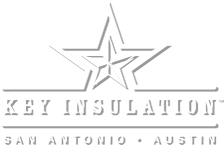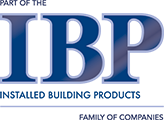A seller’s market opens new opportunity for homebuyers
by San Antonio Business Journal
It’s no secret 2017 is living up to be a seller’s market, just as it was predicted to be. That means a shortage of home inventories to choose from and often resulting in a bidding war inclusive of above-asking prices. Boil that down, it’s like 10 mice fighting for the last piece of cheese, and one is always willing to pay more for it. Sellers this year have seen the highest gain in purchase price at $44,000 since making history back in 2007. And, while economics make a good case for selling your home, sellers should remain aware of what happens after the sell — the home buying journey. With home inventory low, some homeowners have opted to forego the home buy exercise for fear that they, too, would be forced to enter a bidding war for a home that catches more than one potential buyer’s attention — especially when choices are limited. To address this concern, homebuyers who have just recently sold their home are now presented with two options: *Join the bidding war when they find their “perfect” home ( and cross their fingers that no other buyer is eyeing that same home), * Reset their expectations; find a home that is less-than-perfect; and, consider a renovation project. We know how emotionally exhausting the first option can be, only to “rinse and repeat” if at the end of the day they end up on the losing end of a bidding war. That’s not always the best experience. But, let’s take a closer look at the second option — the often-overlooked alternative, and rightfully so, as that sometimes can be due to the stigma that comes with a home renovation. The perhaps surprising news is that more and more people are opting for a home makeover, as nationwide spending for home improvements reach $317 billion. And, thanks to TV networks like HGTV and DIY spotlighting renovation shows, a home rehab is more within reach than it has ever seemed in the past. It’s about resetting your expectations about your future forever home and looking beyond what’s currently in a home for the potential. And, if you don’t have a home remodel fund in your back pocket, not to worry; there are several mortgage options now available to homeowners that allow you to roll the cost of renovation into your mortgage loan. Many of these programs aim to provide borrowers with the ability to find affordable financing to cover the renovation of a property. And these programs often cover smaller projects like kitchen upgrades to larger ones like in-ground swimming pools. Scott Brown, vice president of renovation and construction at SWBC Mortgage explained why the renovation trend is growing. “In today’s day and age, homeowners’ desires have shifted from embracing traditional living quarters to creating unique living spaces — often appreciating the “old charm characteristics” that come with older homes, while still wanting to infuse some modern-style upgrades,” he said. The moral of the story is this – don’t discount that less-than-perfect-home as a contender. With a little bit of imagination and a lender that can provide some creative options, your perfect home may be closer than you think.
- Join the bidding war when they find their “perfect” home (and cross their fingers that no other buyer is eyeing that same home),
- Reset their expectations; find a home that’s less-than-perfect; and, consider a renovation project.
We know how emotionally exhausting the first option can be, only to “rinse and repeat” if at the end of the day they end up on the losing end of a bidding war. That’s not always the best experience.
But, let’s take a closer look at the second option — the often-overlooked alternative, and rightfully so, as that sometimes can be due to the stigma that comes with a home renovation.
The perhaps surprising news is that more and more people are opting for a home makeover, as nationwide spending for home improvements reach $317 billion. And, thanks to TV networks like HGTV and DIY spotlighting renovation shows, a home rehab is more within reach than it has ever seemed in the past.
It’s about resetting your expectations about your future forever home and looking beyond what’s currently in a home for the potential.
And, if you don’t have a home remodel fund in your back pocket, not to worry; there are several mortgage options now available to homeowners that allow you to roll the cost of renovation into your mortgage loan.
Many of these programs aim to provide borrowers with the ability to find affordable financing to cover the renovation of a property. And these programs often cover smaller projects like kitchen upgrades to larger ones like in-ground swimming pools.
Scott Brown, vice president of renovation and construction at SWBC Mortgage explained why the renovation trend is growing. “In today’s day and age, homeowners’ desires have shifted from embracing traditional living quarters to creating unique living spaces — often appreciating the “old charm characteristics” that come with older homes, while still wanting to infuse some modern-style upgrades,” he said.
The moral of the story is this – don’t discount that less-than-perfect-home as a contender. With a little bit of imagination and a lender that can provide some creative options, your perfect home may be closer than you think.
Click here to download a free renovation e-book to find out what you need to know before starting a home renovation.
SWBC Mortgage Corporation has been providing mortgage services since 1988. They are a full-service mortgage lender headquartered in San Antonio, with in-house underwriting, processing, and funding for superior, responsive service, and timely closings. SWBC Mortgage is a wholly owned subsidiary of SWBC, a diversified financial services company.
Equal Housing Lender. Loans are subject to credit and property approval. SWBC Mortgage Corporation. Corporate office located at 9311 San Pedro Avenue, Suite 100, San Antonio, TX 78216. NMLS # 9741( www.nmlsconsumeraccess.org)
Brendan George is SVP of retail loan production at SWBC Mortgage. Brendan has been with SWBC Mortgage for over 8 years and has over 33 years’ experience within the mortgage industry. He can be reached at BGeorge@swbc.com
Affordable Solar Electricity for Your Home
By RESNET
It is a beautiful summer day! Your BBQ is fired up; the kids are in the pool. You’ve got a tall glass of your favorite summer drink within arm’s reach and a bottle of suntan lotion nearby. Then it hits you out of the blue! Could you turn those powerful rays of sunlight beaming down on you into solar electricity to power your home? Most likely your electricity bill is the last thing on your mind when you’re having a pool party, but now that we are on the subject, lets take a look at the opportunity!
Converting sunlight into usable energy has been around for a long time. Using that energy to create electrical power has been in the news for the past thirty years as solar panel technology has improved and people look for alternative energy sources. But has the technology improved so much that it is now convenient and affordable for the average homeowner to take advantage of solar electricity for the house?
We’d like to think that placing a couple of solar panels on the roof will keep your lights on and the refrigerator running, but the reality is it will take a little more effort. You may already be using solar power on a small scale. Many homes have small solar powered garden lights that can be used around the house to illuminate walkways or landscaping.
But you need something with a lot more power to keep your computer and television running, so let’s take a look at the options. The main thing to remember is that solar panels take up space. The more space they take up, the more power they produce. Solar panels are available from small kits that can light an RV or small cabin and don’t really cost very much.
But if you’re thinking of a way to entirely eliminate your monthly electricity payments, you have to give some serious thought as to whether solar electricity for the home is your best option.
As mentioned, space is the big issue. If you live in the country and have several acres of land available, you just might have an opportunity for a large-scale project. In the city, it becomes more difficult. However, the roof of your home provides a large flat area ideal for solar panels.
To determine if solar power is affordable for you, you must crunch some numbers and see how long it will take for it to pay off in the long run. Both state and federal governments offer a number of financial incentives that homeowners can take advantage of to help finance their solar power projects. Or, if you’re still unsure about buying a solar energy system, you could look into leasing one. New Mexico based Affordable Solar, a solar energy solutions company, has teamed up with Sunnova Energy Corp in an innovative solar leasing program. One example of a lease, which includes installation and monitoring, offers New Mexico residents a 4.5-kilowatt residential solar system (typical for a 3 bedroom house) for approximately $79/month without any upfront cost. The rental fee would be offset by the reduction in energy bills.
You also have the option of using partial solar power to reduce your monthly utility bills. If you think solar electricity might be right for you, don’t try it on your own. Get some good advice before you start the project.
Contact a RESNET certified contractor with sound knowledge of solar power technology to advise you on the most affordable way to take advantage of the sun’s rays
What’s In Your Walls?
Use Spray Foam for Net Zero Energy, Superior Adhesion, Moisture Resistance and Tensile Strength
As states and local jurisdiction increasingly move toward more efficient building codes in regards to energy use, the manufacturers of construction materials have been busy developing and improving products that can help meet these new standards. Spray foam can help. While improved energy efficiency can be achieved through many systems, from lighting and appliances to flooring and windows, one of the most obvious and powerful ways to improve efficiency is through building envelope insulation: 40% of a building’s energy can be lost to air leaks.
Spray polyurethane foam (SPF) insulation has been an important energy efficiency tool for decades, with specifiers, architects and builders recognizing its benefits. SPF insulation manufacturers are working to identify new ways that spray foam can help buildings meet and exceed energy efficiency codes.
We reached out to five knowledgeable leaders below with questions about the impacts of new energy codes, the role of energy codes in “next generation” construction, recent advancements in spray foam insulation and some ideas on SPF versatility.
Q: Updates to energy codes now require more energy-efficient building features and tighter building envelopes. How can spray foam insulation help designers and builders achieve higher levels of energy performance in their projects.
A: Spray foam insulation products provide thermal insulation and resist air flow so, they help to neutralize what the U.S. Department of Energy estimates to be the source of almost half of a building’s energy loss. As state and federal codes encourage higher and higher levels of efficiency, architects are increasingly turning towards a system that is “all-in-one” to mitigate heat transfer in their designs. — John Broniek, Senior Engineer, Icynene
Q: Zero net energy buildings are a next frontier in sustainable construction. What makes spray foam insulation a reasonable choice for these ambitious projects? Can you provide an example of a “zero net energy” construction project?
A: Zero net energy buildings are already in the near-term in some state building codes, so it’s just a matter of time until zero net energy will be encouraged then mandated. SPF is an excellent insulation choice because it is a multifunctional product that can serve at various control layers in the building envelope. One project,, The Arc House, has a hybrid envelope with 1) closed cell SPF insulation plus 2) an acrylic roofing membrane, combined with 3) polyiso board and plywood. With the addition of a few solar panels, the result is a highly insulated house that provides net zero energy usage. SPF worked well on this house due to its rounded shape; the expansive nature of SPF allowed the contractor to achieve a precise installation. Additionally, the SPF roofing membrane provided a monolithic seal around the solar panel mounts, helping to prevent air leakage through cell securing penetrations. — Jeremy Parker, National Sales manager, Convestro LLC
Q: The sustainable Construction Industry today pushes beyond superior building energy performance. What are spray foam insulation manufacturers doing to exceed today’s sustainable market demands?
A: One major change that the spray foam industry is undergoing involves a transition to new Low Global Warming Potential (LGWP)
blowing (foaming) agents. The transition started in North America three years ago when Honeywell commercialized its platform of LGWP blowing agents. Consumer and market performance demands are driving rapid growth here.
Designing for sustainability is more than a single attribute focus or achievement. It involves “systems-integration”. Energy efficiency is one aspect, but it includes resilience, storm resistance, comfort, air quality and environmental footprint. Spray foam insulation contributes to industry sustainability goals by providing multiple functionality in a single product that addresses several sustainability systems—at once. Thermal performance, air sealing, comfort, moisture control, storm resistance and structural enhancement all can be improved when you use spray foam insulation. While reducing a building’s environmental footprint, the new LGWP formulations further green building sustainability goals. — Xuaco Pascual, Global Marketing Manager—Foam Insulation, Honeywell
Q: Many think of spray foam insulation only as a wall product. How can spray foam insulation be used in roofing applications to improve overall building envelope performance?
A: Spray foam roof systems are the only roof systems that are seamless, self –flashing and adhere to the substrate. These qualities help eliminate air and water leakage, Unless mechanically damaged, a spray foam roof system is resistant to water leakage, and if damaged, water tends to be contained in the damaged area. This can reduce the cost of repair and interior damage. Additionally, SPF roof systems can be renewable solution through maintenance and reapplication of roof coatings that help protect the SPF from degradation extending the roof life and saving replacement cost.—Doug Weaver, Roofing Business Manager, SWD Urethane
Q: Building resiliency and fortification are current sustainable construction buzzwords. What about construction projects that may be subject to natural disasters like hurricanes and flooding, any help there?
A: Products like closed cell spray polyurethane foam tend to work well in projects subject to the stresses of natural disasters. This is due to inherent characteristics of the material, such as a very low water absorption rate and high tensile and adhesion force. For building subject to water damage during a flood event, using material not damaged by water contact can speed up the cleanup and re-occupancy times and reduce the amount of waste generated during the rebuilding process. For homes subject to high wind events like a hurricane, applying closed cell SPF foam to the roof’s underside can reduce structural damage by helping to attach the roof sheathing to the frame while simultaneously providing a secondary water barrier in the event that the roof cladding is damaged.
Resiliency and fortification are key to sustainable construction. Spray foam, as above, is an excellent insulation choice because the material has durability and can withstand many of the stresses of nature. It is easy to see how spray foam can be sustainable construction material.—Brian Oman, Application Specialist, Sr., BASF
Supporting our youth leaders of tomorrow!


Saying Goodbye

After being a Key Insulation employee for 16 years, we said goodbye to Abraham Nevarez. Abe started out as an installer 16 years ago. He worked his way to Operations Manager, and took over as Branch Manager when Valinda left. Over the past year or so Key Insulation has undergone a lot of changes. Abe stepped into very hard shoes to fill; but he did exactly that. Abe was an awesome leader, a great role model, and Key Insulation was lucky to have another great leader! He will be missed dearly! We wish him nothing but the best.





